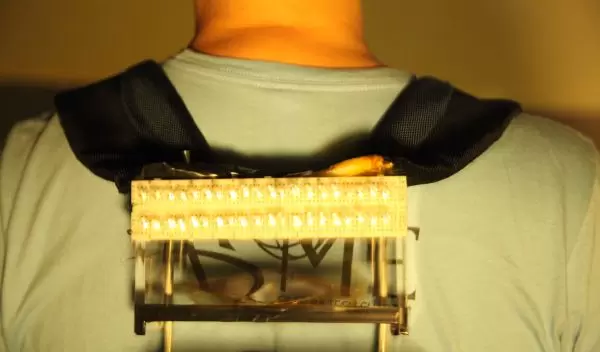
Walking can recharge the spirit, but what about our phones?
Editor's Note: This Behind the Scenes article was first provided to LiveScience in partnership with the National Science Foundation.
By the end of 2014, Earth will be home to more mobile electronic devices than people.
Smartphones, tablets, e-readers, not to mention wearable health and fitness trackers, smart glasses and navigation devices--today's population is more plugged in than ever before.
But our reliance on devices is not problem-free:
- Wireless gadgets require regular recharging. While we may think we've cut the cord, we remain reliant on outlets and charging stations to keep our devices up and running.
- According to a 2009 report by the International Energy Agency (IEA), consumer electronics and information and communication technologies currently account for nearly 15 percent of global residential electricity consumption. What's more, the IEA expects energy consumptions by these devices to double by 2022 and to triple by 2030--thereby slowly but surely adding to the burden on our power infrastructure.
With support from the National Science Foundation, a team of researchers at the Georgia Institute of Technology may have a solution to both problems: They're developing a new, portable, clean energy source that could change the way we power mobile electronics: human motion.
Led by material scientist Zhong Lin Wang, the team has created a backpack that captures mechanical energy from the natural vibration of human walking and converts it into electrical energy. This technology could revolutionize the way we charge small electronic devices, and thereby reduce the burden of these devices on non-renewable power sources and untether users from fixed charging stations.
Smaller, lighter, more energy efficient
Wearable generators that convert energy from the body's mechanical potential into electricity are not new, but traditional technologies rely on bulky or fragile materials. By contrast, Wang's backpack contains a device made from thin, lightweight plastic sheets, interlocked in a rhombic grid. (Think of the collapsible cardboard containers that separate a six pack of fancy soda bottles.)
As the wearer walks, the rhythmic movement that occurs as his/her weight shifts from side to side causes the inside surfaces of the plastic sheets to touch and then separate, touch and then separate. The periodic contact and separation drives electrons back and forth, producing an alternating electric current. This process, known as the triboelectrification effect, also underlies static electricity, a phenomenon familiar to anyone who has ever pulled a freshly laundered fleece jacket over his or her head in January.
But the key to Wang's technology is the addition of highly charged nanomaterials that maximize the contact between the two surfaces, pumping up the energy output of what Wang calls the triboelectric nanogenerator (TENG).
"The TENG is as efficient as the best electromagnetic generator, and is lighter and smaller than any other electric generators for mechanical energy conversion," says Wang. "The efficiency will only improve with the invention of new advanced materials."
Charging on the go
In the laboratory, Wang's team showed that natural human walking with a load of 2 kilograms, about the weight of a 2-liter bottle of soda, generated enough power to simultaneously light more than 40 commercial LEDs (which are the most efficient lights available).
Wang says that the maximum power output depends on the density of the surface electrostatic charge, but that the backpack will likely be able to generate between 2 and 5 watts of energy as the wearer walks--enough to charge a cell phone or other small electronic device.
The researchers anticipate that this will be welcome news to outdoor enthusiasts, field engineers, military personnel and emergency responders who work in remote areas.
As far as Wang and his colleagues are concerned however, human motion is only one potential source for clean and renewable energy. In 2013, the team demonstrated that it was possible to use TENGs to extract energy from ocean waves.
The research report, "Harvesting Energy from the Natural Vibration of Human Walking", was published in the journal ACS Nano on November 1, 2013.
